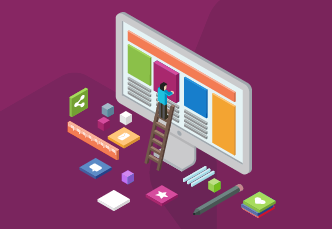


Humans are visual creatures. Much of the increased rate of data shared on the internet is due to the exponential growth of graphical and video content. We respond to visual cues -- which drives engagement. In fact, 90% of information transmitted to the brain is visual, and visuals are processed by the brain 60,000 times faster than text (Zabisco). As a result, a simple photo, diagram, or meme can more quickly disseminate an important concept than several pages of text. And as more and more of our enterprise collaboration activities become centered around the newsfeed, the activity card will play an ever more central role in how we communicate and collaborate.

There is a reason why the most popular websites -- Facebook, Twitter, LinkedIn -- share this common functionality: newsfeeds and activity cards are an effective way to share and consume information. Once logged in, the newsfeed becomes dynamic, personalized and relevant based on who you are connected to, what is happening within your circle of influence, and the content and activities you consume. It is at the center of our social experience, and it is where we go to stay informed. As links and content and ideas are shared, the systems we use automatically create visual cues to catch our attention, to communicate an idea, and to help us understand the context or relevance with a quick glance.
Add a link to a website or document, and most tools and platforms will generate a generic card for the link, usually pulling the first image within the link or others within the document, or allow you to add a standalone image. Why make the sharing of a link more visual? Because the data shows that people respond to these visual cues. In other words, visual content drives engagement. According to one study, just one month after the introduction of Facebook timeline for brands, visual content (such as photos and videos) saw a 65% increase in engagement. (Simply Measured)
No area of corporate life has been impacted the way that data analysis has been transformed by visualizations. The purpose of data visualizations is to help people understand a complex dataset more quickly and easily than looking through rows and columns of data alone. Reviewing massive amounts of data can be overwhelming. Data visualizations are about putting that raw data into perspective, and helping people understand the stories, or the compelling messages, that are often hidden within.
"If history were taught in the form of stories, it would never be forgotten." ~Rudyard Kipling
Of course, simply providing a visual interpretation of your data is not enough for people to trust the data. For any visualization to have impact, you must understand your target audience, create a visualization that fits with the subject matter, and provide all of this within context. That's why data visualizations within the scope of your collaboration platform can be so compelling -- and why activity cards are so effective.
The world became familiar with the card-based interface thanks to Pinterest, which ranks alongside Facebook and LinkedIn in popularity. Interestingly, Pinterest generated more referral traffic for businesses than Google+, YouTube, and LinkedIn combined. (Shareaholic) What makes Pinterest powerful is that there is intent behind every pin, just as there is intent behind each activity (or content) card within the newsfeed. In other words, the visual component of a card is not random, but reflects the content and context of the card.
The information on the activity card can help you understand why the document would be interesting or relevant, allowing the user to filter their interests and refine their view of the content they see. The image will often give you a hint about what the document is about, or the type of content -- making it easier to find your way back to the content later. And if there is no image within the body of content, the activity card will present a default image illustrating the file type (Word document, PowerPoint template, Vimeo link, etc).
The newsfeed is central to the Beezy solution because it is the best way for people to connect with their content and internal communities within SharePoint, plain and simple. It is a powerful way for individuals to discover and interact with the people, ideas and content that are relevant to them.
Cards appear in your newsfeed based on your profile and preferences, and with Beezy, anything in your newsfeed follows the same permission-trimming rules as any other SharePoint site. Activity cards surface content based on the communities you join, the people you follow within your network, the topics and keywords that are important to you, and the permissions you have in SharePoint. Both the traditional newsfeed and the card-based newsfeed follow the same patterns of success as the leading social networking sites, incorporating activities around Discovery, Follow-up, and Recovery.
The newsfeed is increasingly the way that people consume data in the modern digital workplace. As a user experience, the newsfeed is familiar, it is intuitive, and when it is employed within SharePoint it can dramatically improve adoption, engagement, and productivity. Activity cards enhance the usability of the newsfeed, providing necessary visualizations that can increase engagement and improve collaboration.
If you would like to better understand how these latest advances in the newsfeed and activity cards can improve productivity for your team, schedule your Beezy demo today.
These Stories on Beezy

No Comments Yet
Let us know what you think